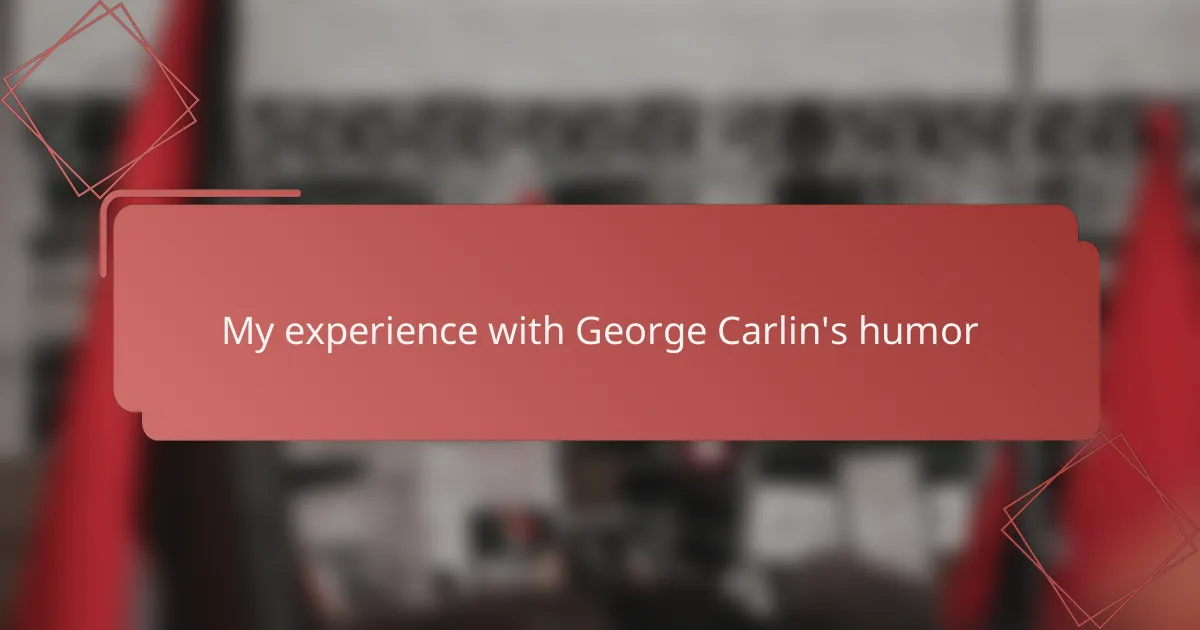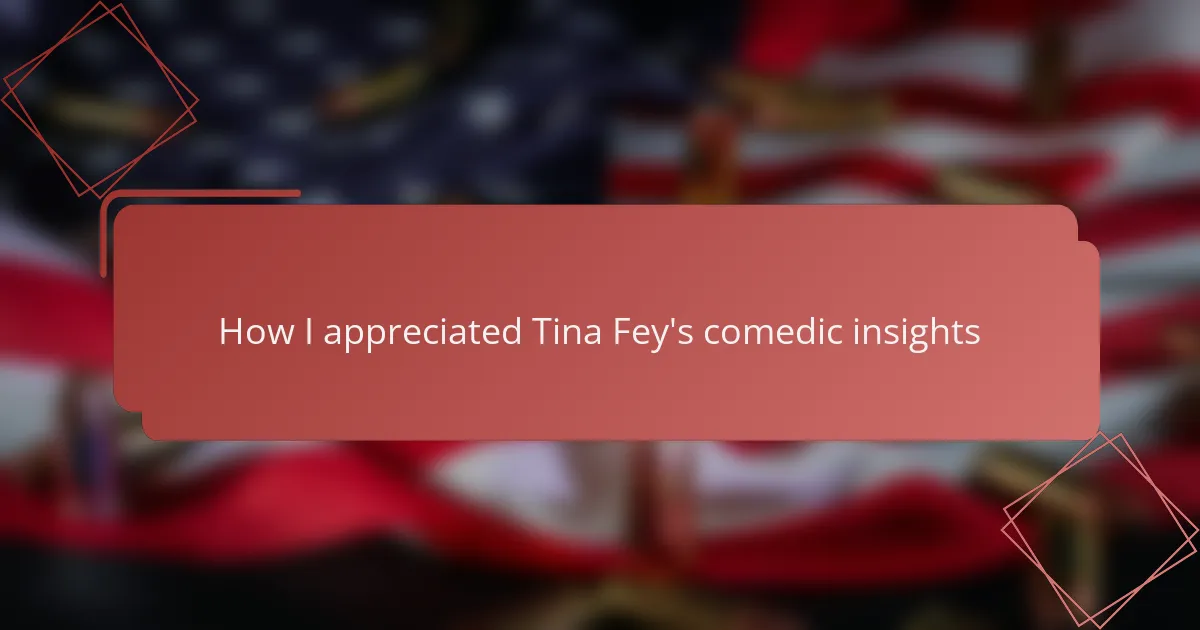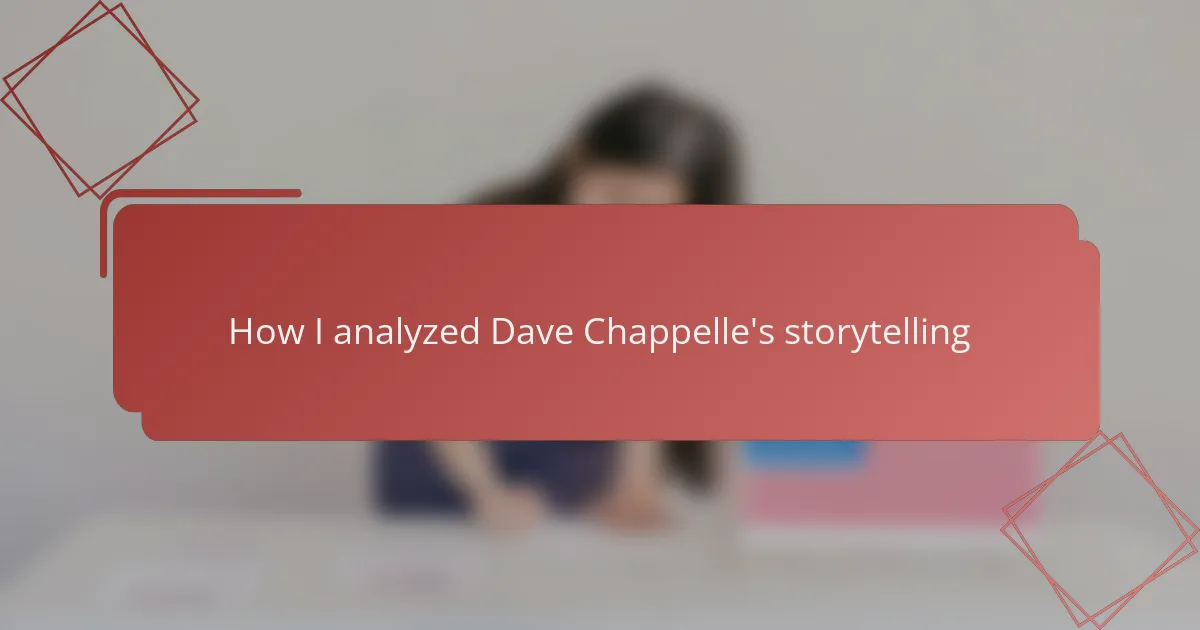Key takeaways
- Political satire is a powerful tool for critiquing systems and sparking critical thinking, as exemplified by Jon Stewart’s blend of humor and insight.
- Stewart’s style effectively combines irony and emotional honesty, making complex political issues more relatable and accessible to the audience.
- His critiques focus on fact-checking and highlighting contradictions, encouraging viewers to actively engage and question narratives rather than accept information passively.
- Satire serves as a medium that not only entertains but also fosters deeper analysis and understanding of political discourse.

Understanding Political Satire Basics
Understanding political satire was a game-changer for me after watching Jon Stewart. He showed me it’s more than just jokes; it’s a clever way to expose truths in politics. I realized satire makes complex issues relatable, sparking critical thinking without feeling like a lecture.
| Element | Political Satire Basics |
|---|---|
| Purpose | Critique political systems and figures using humor |
| Tone | Witty, ironic, sometimes biting yet engaging |
| Audience Effect | Encourages reflection and discussion |
| Example | Jon Stewart’s segments on media bias and political hypocrisy |

Exploring Jon Stewart’s Style
Jon Stewart’s style always struck me as refreshingly grounded yet incisive. What stood out most was his ability to blend humor with sharp political insight, making complex issues accessible without losing depth. I remember watching his show during heated election seasons, feeling both informed and oddly comforted by his candid approach.
One element of his style that I found particularly impactful was his use of irony and sarcasm to expose contradictions in political rhetoric. This technique didn’t just entertain; it encouraged me to question the status quo more critically.
- Masterful use of irony to highlight political hypocrisy
- Skillful balance of humor and serious critique
- Conversational tone that invites viewers into complex discussions
- Relatable and down-to-earth delivery that builds trust
- Ability to simplify complicated issues without dumbing them down
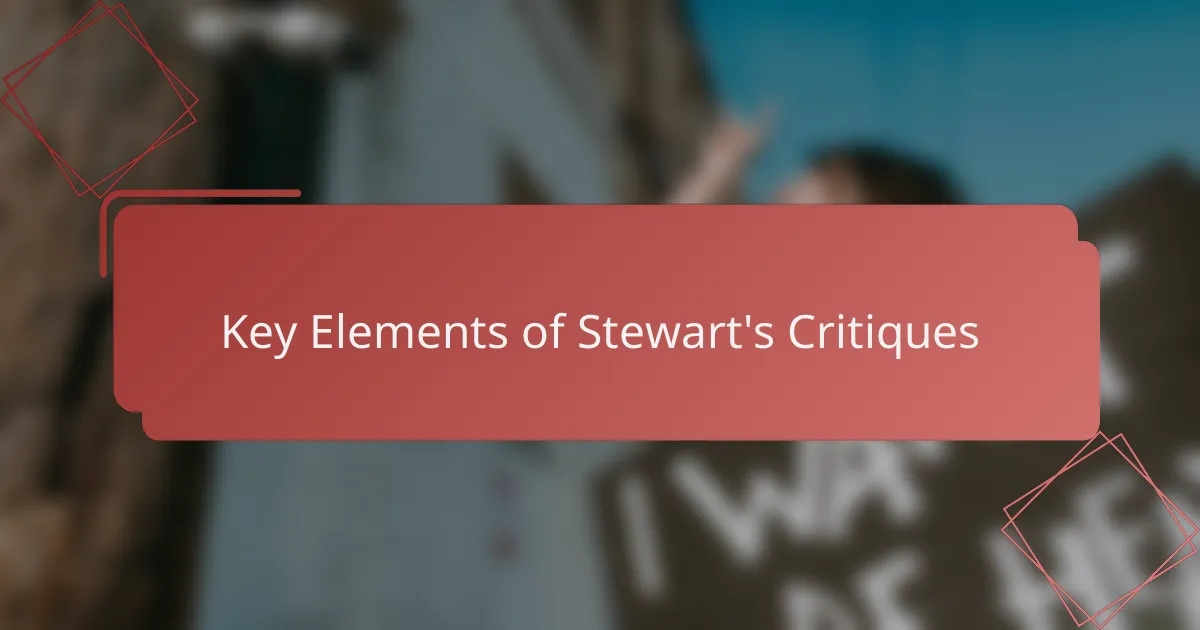
Key Elements of Stewart’s Critiques
Jon Stewart’s critiques always struck me with their sharp wit and deeply human perspective. What I found compelling—and personally inspiring—was his ability to blend humor with a genuine call for accountability. His style wasn’t just about making people laugh; it was about making them think and, often, feel the urgency behind the issues he dissected.
Here are the key elements that make Stewart’s critiques stand out:
- Relentless Fact-Checking: He never let misinformation slide, holding media and politicians accountable with evidence.
- Balanced Humor: Stewart used satire not to mock for the sake of comedy but to expose hypocrisy and absurdity.
- Emotional Honesty: His critiques often revealed a sincere frustration and hope, creating a connection beyond just intellectual critique.
- Accessibility: Stewart’s language was clear and engaging, making complex political issues understandable to a broad audience.
- Moral Clarity: Despite the humor, his core message always pointed towards justice, fairness, and common decency.
I remember how Stewart’s approach changed my own view on political discourse—he taught me that critique doesn’t have to be cold or cynical; it can be passionate and compassionate at once.
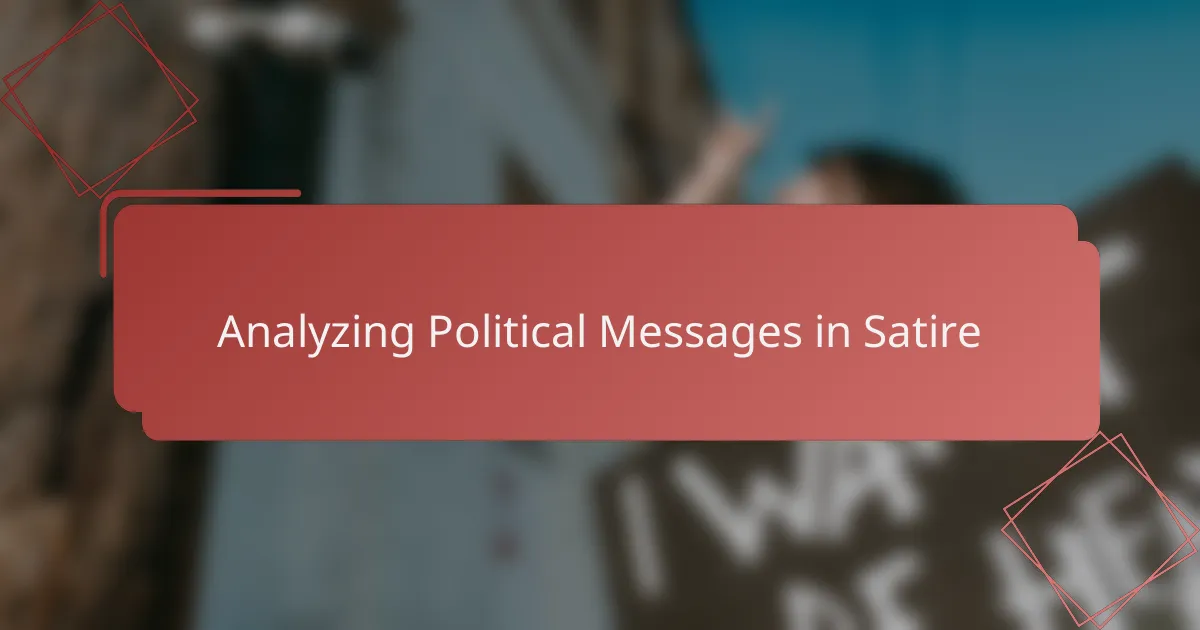
Analyzing Political Messages in Satire
Analyzing political messages in satire requires more than just catching the jokes; it’s about decoding the layers of meaning beneath the humor. Jon Stewart taught me to look beyond the punchlines and ask why certain topics get spotlighted and how the satire challenges the status quo. His critiques often felt like a wake-up call—prompting me to be both a sharper observer of media and a more critical thinker about political narratives.
| Aspect | Jon Stewart’s Approach |
|---|---|
| Focus | Highlighting systemic flaws through humor |
| Tone | Witty but sharp, blending empathy with critique |
| Audience Engagement | Encourages viewers to question and research |
| Effectiveness | Connects complex issues with everyday experiences |
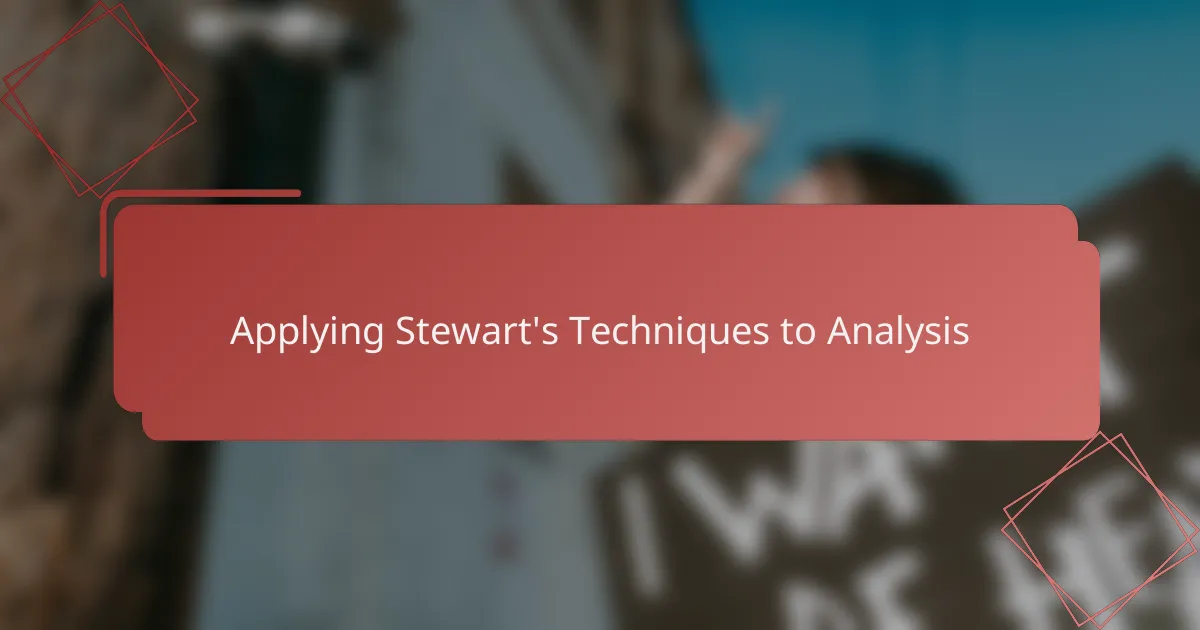
Applying Stewart’s Techniques to Analysis
When I first tried to apply Jon Stewart’s approach to political satire, I realized how crucial his sharp focus on underlying facts was. Unlike many satirists who lean heavily on humor alone, Stewart’s critiques always hinged on exposing contradictions and hypocrisies with precision. This technique not only deepened my understanding but helped me communicate complex political issues more effectively.
What struck me most was Stewart’s ability to balance humor with sincerity, making tough topics approachable without losing seriousness. I remember analyzing a segment where he dismantled political spin; it taught me to weave satire in a way that feels both entertaining and enlightening. Here are some key techniques I adopted from his style:
- Prioritize fact-checking and evidence to ground satire in reality
- Use irony to highlight contradictions without alienating the audience
- Combine humor with genuine emotional appeal to connect deeply
- Focus critiques on systemic issues rather than individual personalities
- Maintain a conversational, relatable tone to make complex topics accessible
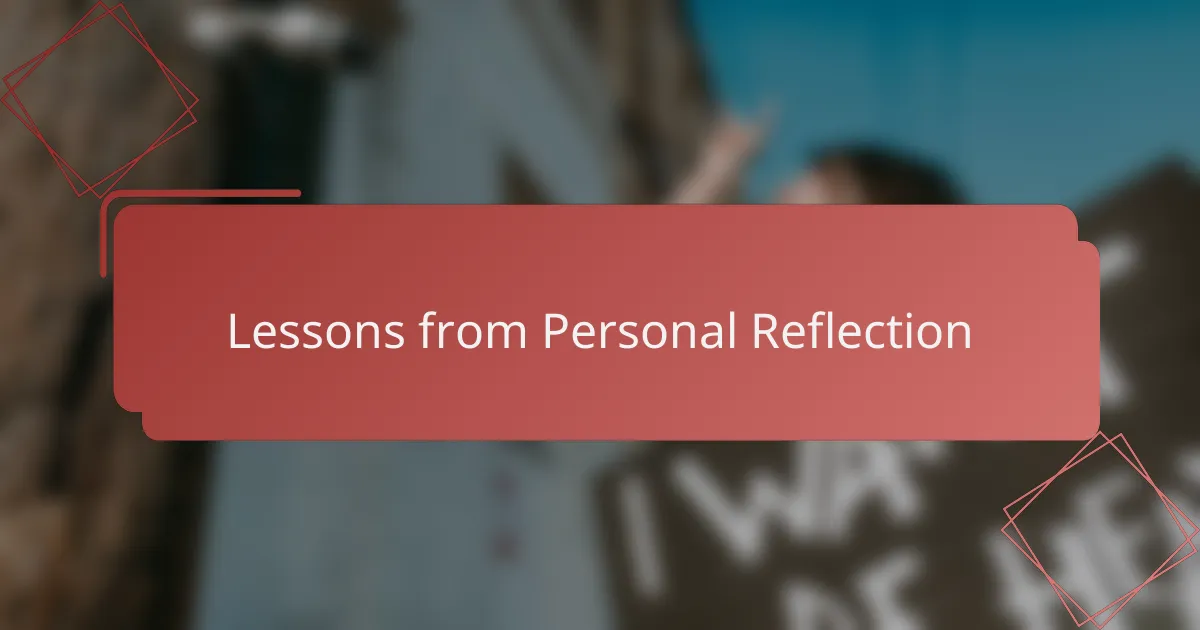
Lessons from Personal Reflection
Lessons from Personal Reflection revealed to me how Jon Stewart’s critiques are less about tearing down and more about challenging complacency. I remember watching one of his monologues that called out media bias, and it struck a nerve—I realized how often I accepted information at face value. This pushed me to think deeper and question narratives rather than simply echoing popular opinions.
What really stood out was Stewart’s ability to balance humor with serious critique. His approach taught me that satire isn’t just about making people laugh; it’s about making them think. I found myself inspired to incorporate that same blend of wit and insight in my own work, aiming to spark reflection rather than just amusement.
| Before Reflection | After Reflection |
|---|---|
| Accepted media narratives without much questioning | Developed a habit of analyzing sources critically |
| Viewed satire mainly as entertainment | Recognized satire as a tool for serious political critique |
| Focused on humor alone | Balanced humor with meaningful insight |
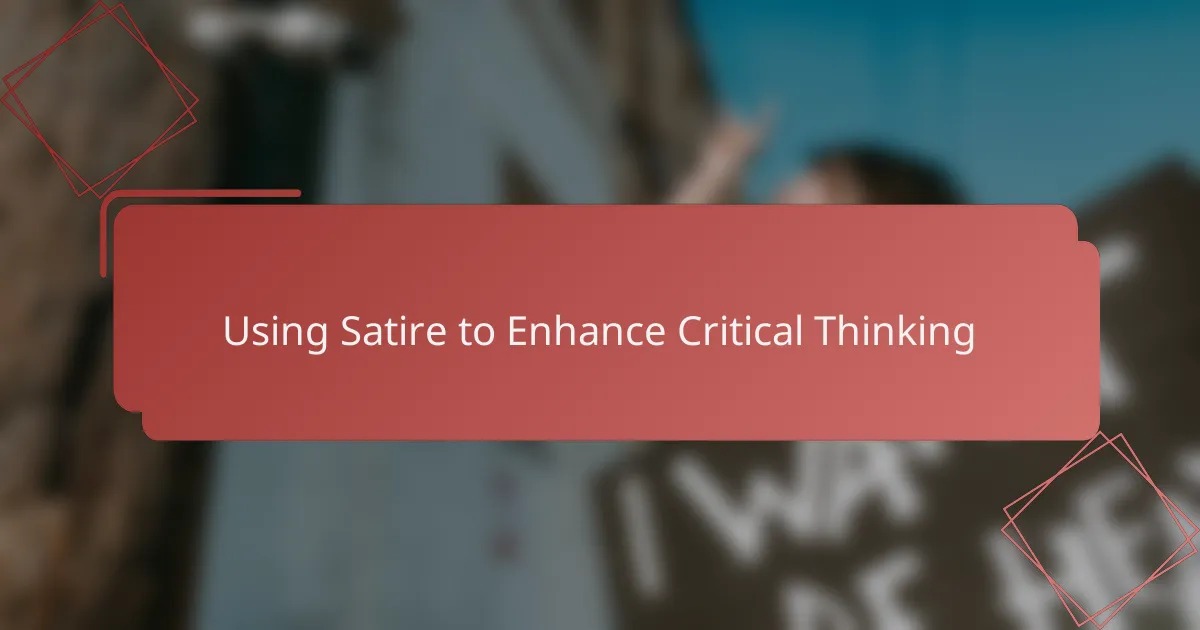
Using Satire to Enhance Critical Thinking
Using satire to enhance critical thinking became clearer to me through Jon Stewart’s approach. I often found myself wondering, how can humor push me to question my own beliefs? Stewart showed me that satire isn’t just about laughter—it’s about opening your mind to contradictions that otherwise slip by unnoticed.
What’s powerful in this method is how satire breaks down complex political issues into something relatable and digestible. I remember watching a segment where Stewart used irony to expose a blatant double standard, and it nudged me to dig deeper instead of taking headlines at face value. This mix of humor and critique made me realize critical thinking can actually be engaging and even fun.
Have you ever felt overwhelmed by political jargon and endless news cycles? Satire, as Stewart demonstrated, offers a refreshing detour. It encourages us not just to consume information passively but to analyze it actively, asking “Why is this happening?” and “Who benefits from this story?” That shift transformed how I interact with politics—it turned confusion into curiosity.

